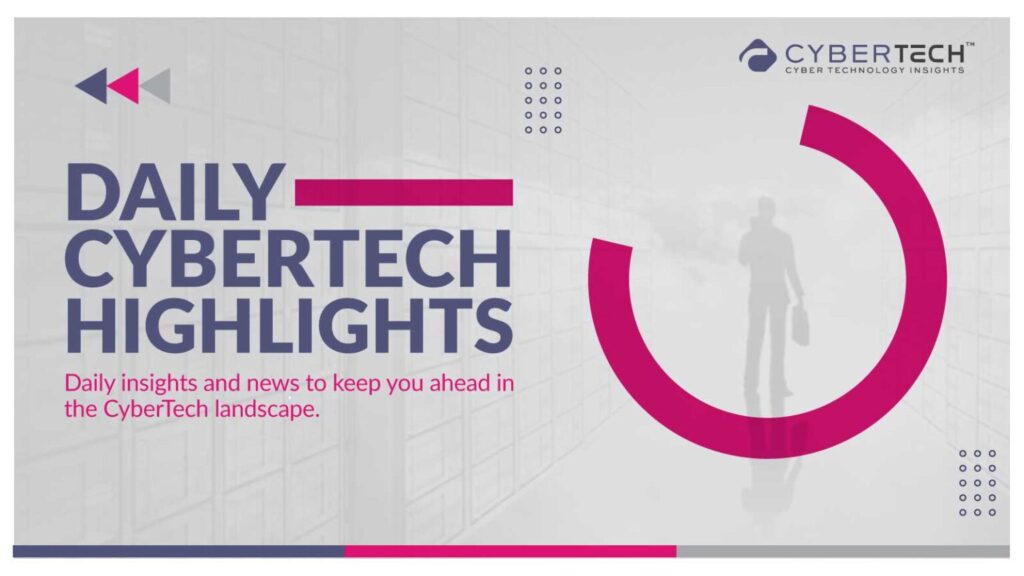Ransomware Won’t Knock—It’ll Kick Down the Firewall: Are You Ready? Top CyberTech Experts Reveal the Darker Side
As we observe Anti-Ransomware Day, the stakes for cybersecurity have never been higher. Ransomware attacks have evolved from an occasional nuisance into a global crisis, relentlessly targeting critical industries, from healthcare and manufacturing to media, marketing, and utilities. These digital extortions are no longer isolated incidents; they are full-scale operations with catastrophic consequences for businesses and individuals alike.
Today, it’s imperative to reflect on the evolving landscape of ransomware threats and the strategies necessary to combat them. Established in 2020 by INTERPOL in collaboration with Kaspersky, this day commemorates the infamous WannaCry ransomware attack of 2017 and serves as a global call to action against ransomware threats.
We sat down with the CyberTech Top Voice panelist contributors to understand the real hits and misses in the industry. The speakers include:
- Kern Smith, VP of Global Solutions at Zimperium
- Saeed Abassi, Manager, Vulnerability Research at Qualys Threat Research Unit
- Heath Renfrow, Co-founder and CISO at Fenix24
- John Anthony Smith, Founder and CSO at Fenix24
- Chad Cragle, CISO at Deepwatch
- Stephen Kowski, Field CTO at SlashNext Email+ Security
Anti-Ransomware Day: The Digital Battlefield We Can’t Ignore
In 2023 alone, the healthcare sector was rocked by the MOVEit cyberattack, which affected organizations worldwide, including American Health System in the U.S. Hospitals and clinics experienced disruptions in patient care, with sensitive health data held hostage by cybercriminals demanding ransoms. Similarly, Universal Health Services, a major healthcare provider, faced a crippling attack in 2020, leaving thousands of patients’ medical records vulnerable and systems offline for days.
The Escalating Threat Landscape
Ransomware attacks have surged in both frequency and sophistication. In the first quarter of 2025 alone, incidents increased by 126%, highlighting the urgent need for robust cyber resilience strategies. Attackers are no longer just encrypting data; they’re employing multi-faceted extortion tactics, including data exfiltration, public shaming, and distributed denial-of-service (DDoS) attacks.
The advent of AI-driven tools has further lowered the barrier to entry for cybercriminals. Agentic AI systems are now capable of autonomously developing and deploying ransomware, accelerating the pace and complexity of attacks.
The manufacturing sector also felt the heat. JBS Foods, one of the world’s largest meat producers, was struck by a ransomware attack in 2021, which brought the company to its knees, halting production and causing severe supply chain disruptions. This attack, linked to the REvil ransomware group, exposed vulnerabilities in critical infrastructure and prompted urgent calls for enhanced cybersecurity measures within industries responsible for global food production.
In media and marketing, the Accenture breach in 2021 highlighted the growing risk to service providers managing sensitive data for major brands. Hackers infiltrated Accenture’s internal systems and leveraged the attack to steal valuable data from clients in diverse industries, including advertising giants and digital content producers. These incidents reflect how ransomware attacks can undermine a company’s reputation, erode client trust, and cost millions in recovery efforts.
Utilities, often seen as the backbone of society, are not immune either. In 2020, Kaseya, a global IT management company, was targeted in a supply chain ransomware attack that affected over 1,500 businesses, including critical service providers in the utilities sector. Cybercriminals took control of systems managing energy grids, water supplies, and telecommunications, leaving customers vulnerable to widespread outages and disruptions.
These attacks are a reminder of the growing sophistication and urgency surrounding ransomware. As we observe Anti-Ransomware Day, it’s crucial to recognize that no sector is too safe, and no company, regardless of size or scope, is beyond the reach of cybercriminals. The question is not if we will be targeted—but when. To stay ahead, businesses must embrace a multi-layered defense, proactive threat detection, and an unwavering commitment to recovery preparedness. On this day, we reflect on the lessons learned from past crises and take action to safeguard our digital futures.
Read Latest CyberTech Insights: Is GenAI More Beneficial for Cyber Defenders or For Attackers?
Expert Insights: Strategies for Defense
1. Mobile Device Security
Kern Smith, VP of Global Solutions at Zimperium, emphasizes the growing threat to mobile devices. Cybercriminals are increasingly targeting smartphones and tablets through mobile phishing (mishing) attacks and exploiting vulnerabilities in apps and operating systems. Organizations must implement real-time, on-device protection tailored for mobile threats to stay ahead of these tactics.
2. Proactive Vulnerability Management
Saeed Abassi, Manager of Vulnerability Research at Qualys Threat Research Unit, highlights the importance of understanding the nuances of ransomware attacks and the vulnerabilities they exploit. He advocates for immediate patching of known exploited vulnerabilities and adopting risk-based prioritization to proactively address threats.
3. Resilient Infrastructure and Recovery
Heath Renfrow, Co-founder and CISO at Fenix24, points out that ransomware is not just a data issue but a full-scale business operations crisis. He stresses the need for integrated cybersecurity frameworks, real-time threat intelligence, and resilient infrastructure to ensure rapid detection, coordinated response, and intelligent recovery.
Recommended: From Complacency to Catastrophe: The Unseen SMB Cybersecurity Chasm, Reported by Crowdstrike
4. Leadership and Recovery Strategies
John Anthony Smith, Founder and CSO at Fenix24, underscores the necessity for organizational leadership to recognize that traditional disaster recovery plans often fail against ransomware attacks. He advocates for robust recovery strategies that prioritize the development and implementation of resilient backup systems.
5. Continuous Monitoring and Rapid Response
Chad Cragle, CISO at Deepwatch, emphasizes that modern defense strategies must include always-on visibility, rapid containment, and tested recovery protocols. Services like Managed Detection and Response play a central role in providing 24/7 threat monitoring and expert-led action.
6. Phishing Awareness and Training
Stephen Kowski, Field CTO at SlashNext Email+ Security, notes that ransomware attacks often start with deceptive messages. He advocates for security measures that can detect and block phishing across various platforms and emphasizes the importance of educating employees to recognize and avoid such threats.
At Intent Amplify®, we work closely with leading cybersecurity, AI, and tech-driven companies to amplify their reach, engage security decision-makers, and generate high-intent B2B leads. From zero-trust frameworks to endpoint security and ransomware recovery solutions, our omni-channel lead generation and ABM services ensure your cybersecurity innovations reach the right audience, at the right time.
Building a Proactive Defense
To effectively combat ransomware threats, organizations should:
- Implement Multi-Layered Security: Adopt a defense-in-depth approach that includes endpoint protection, network segmentation, and real-time monitoring.
- Regularly Update and Patch Systems: Ensure all software and systems are up-to-date to close known vulnerabilities.
- Conduct Employee Training: Educate staff on recognizing phishing attempts and safe online practices.
- Develop and Test Incident Response Plans: Create comprehensive response strategies and conduct regular drills to ensure preparedness.
- Maintain Secure Backups: Regularly back up data in secure, offline locations to ensure recovery without paying ransom.
Conclusion
International Anti-Ransomware Day serves as a stark reminder of the persistent and evolving threat of ransomware. By adopting proactive strategies, investing in robust cybersecurity measures, and fostering a culture of awareness and resilience, organizations can fortify their defenses against these insidious attacks. The battle against ransomware is ongoing, but with vigilance and preparedness, we can safeguard our digital frontlines.
FAQs on Ransomware and How to Defend Against It
What is Anti-Ransomware Day and why is it important?
Anti-Ransomware Day, established in 2020 by INTERPOL and Kaspersky, commemorates the WannaCry ransomware attack of 2017. It serves as a global reminder for organizations to reinforce their cybersecurity defenses against ransomware, a growing and sophisticated threat that targets industries like healthcare, manufacturing, and utilities.
How are ransomware attacks evolving?
Ransomware attacks are becoming more frequent and sophisticated. Attackers now use multi-layered extortion tactics, such as data exfiltration, public shaming, and DDoS attacks, to amplify their impact. Additionally, AI tools are helping cybercriminals automate and enhance the scale and complexity of these attacks, making them more accessible and destructive.
What sectors are most vulnerable to ransomware attacks?
Key industries targeted by ransomware include healthcare (e.g., the MOVEit cyberattack), manufacturing (e.g., the JBS Foods attack), media and marketing (e.g., Accenture’s breach), and utilities (e.g., the Kaseya attack). These sectors are particularly vulnerable due to their reliance on critical infrastructure and sensitive data.
What strategies should organizations adopt to defend against ransomware?
Organizations should implement a multi-layered defense approach, which includes real-time monitoring, strong endpoint protection, and network segmentation. Proactive vulnerability management, including regular patching, is crucial to minimize exposure to known exploits. Training employees to recognize phishing attempts is also vital, as most ransomware attacks begin with deceptive messages.
How can organizations prepare for and recover from a ransomware attack?
Preparation involves developing comprehensive incident response plans, conducting regular drills, and maintaining secure offline backups. In the event of an attack, rapid containment and recovery are essential. Organizations should invest in resilient infrastructure and use real-time threat intelligence to quickly respond to and recover from ransomware attacks.
What role does AI play in ransomware attacks?
AI is increasingly being used by cybercriminals to enhance the sophistication of ransomware attacks. AI can automate the discovery of vulnerabilities and develop more effective attack vectors, allowing ransomware to spread faster and more efficiently. It also helps attackers with phishing tactics, such as creating realistic, AI-generated emails or messages to trick victims into downloading malicious payloads. As AI continues to advance, it enables attackers to scale up their operations and make the process of launching ransomware attacks more accessible to a wider range of cybercriminals. This underscores the importance of integrating AI-driven defenses into cybersecurity strategies to counter these increasingly automated threats.
At CyberTech Insights, we are committed to helping CIOs and CISOs of SMBs build resilience at every stage of their growth journey. Cybersecurity isn’t just for a set of decision-makers—it’s for the backbone of the global economy.
Cyber Technology Insights : Arctic Wolf Accelerates Momentum of Aurora Endpoint Security
To participate in our interviews, please write to our CyberTech Media Room at sudipto@intentamplify.com



